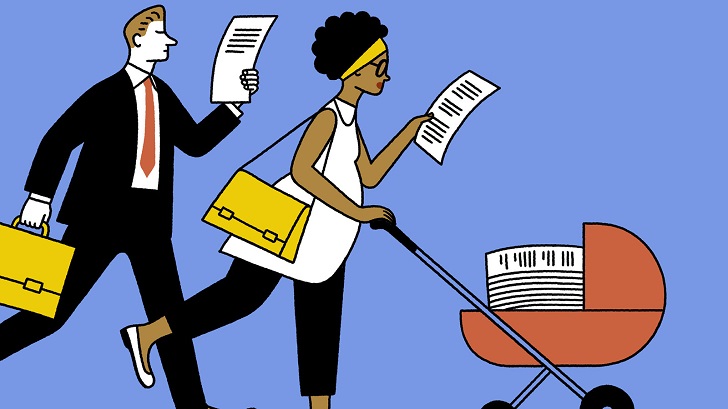Incorporating a new kid into a family can be rather thrilling. The first few weeks and months of becoming a parent are often busy, joyful, and occasionally stressful. Although maternity leave is prevalent in the United States, moms are not the only ones who require time off after delivering a child. Paternity leave for new fathers is becoming more prevalent across the nation too.
Paternity leave is a period of weeks or months during which a new father is permitted to remain at home. There are several methods to organize paternity leave. It may be made available by an employer or mandated by the state or federal government. Paternity leave may be paid or unpaid, and many kinds of paid paternity leave provide only a fraction of the average pay.

What is paternity leave?
Men use paternity leave in order to care for and bond with their baby, adopted kid, or foster child. If your employer offers paid paternity leave, you may be eligible. In certain circumstances, you may only have access to unpaid leave, in which case, you’ll also need to assess how much time you can afford to take off or have no alternatives for paternity leave.
Every company has its own policy. Occasionally, paternity leave is combined with other types of leave, such as vacation time or sick leave. If you choose to take paternity leave, it will be deducted from your vacation or sick days. Some employers may refer to it as a “parental leave” or “family leave” and make it available to new mothers and fathers.

Paternity leave vs. parental leave
Parental leave differs from paternity leave in that it is often available to any parent, regardless of gender or birth status. In certain nations, parental leave replaces maternity and paternity leave. In some jurisdictions, a leave follows statutory maternity or paternity leave. In certain instances, parental leave can also be utilized to care for older children.
Parental leave may include a “father’s quota,” which refers to a time of leave earmarked specifically for dads. If the father does not take this leave, the family forfeits the booked leave time. This strategy is applied in Iceland, Norway, and Sweden. 90% of dads in Norway take at least 12 weeks of paternity leave, compared to just 3% previous to the policy’s adoption, which has sparked some controversy but overall had favorable effects.

How long is paternity leave?
The length of paternity leave, if available, depends on various circumstances, including your employer’s policy and the state where you reside and work. Consult your company’s Human Resources department to see what options are available.
In certain instances, paternity leave is shorter than maternity leave. In order to cover a longer period, you may need to take leave in several shifts if you live in a family with two fathers, for example.




